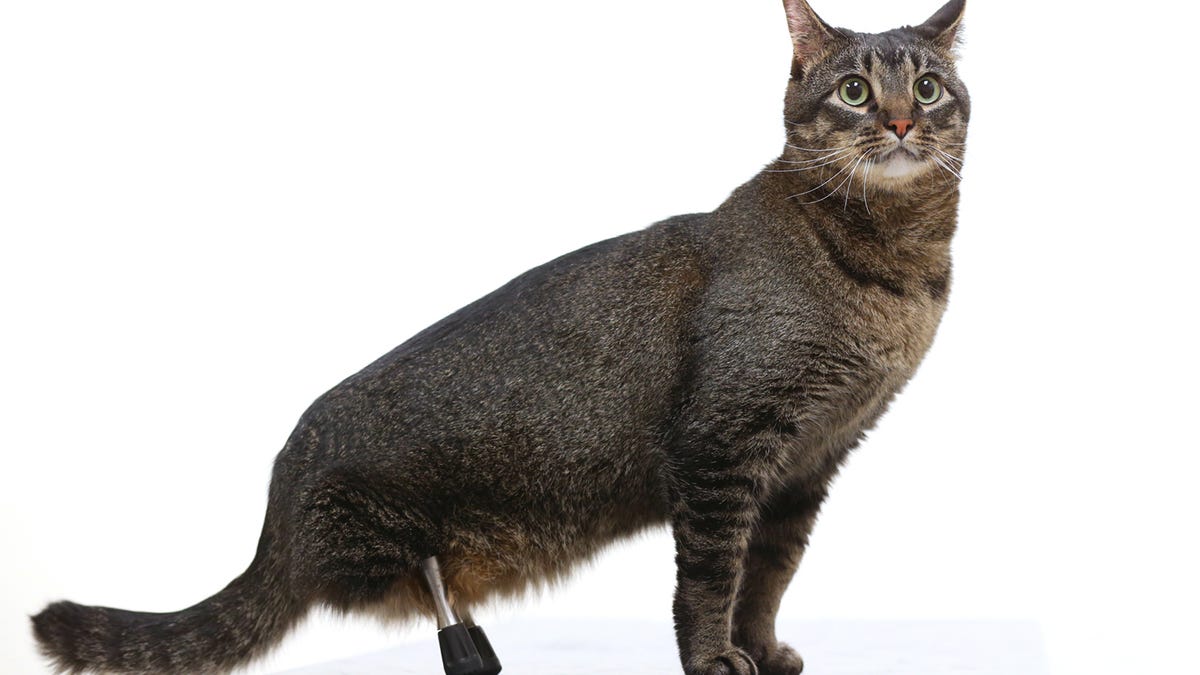Disabled kitty gets prosthetic titanium legs
A rescue cat that turned up at a shelter missing his back feet has been fitted with titanium prosthetics to help him get around.
When Vincent showed up at the Story County Animal Shelter in Nevada, Iowa, he'd been through something awful. He had been found injured at a camping site, back legs missing from the shinbone down. The shelter had no idea how he'd gotten that way, but the little guy was in luck. He was adopted by Cindy Jones, whose daughter Emily Jones was attending veterinary school at Iowa State University.
Emily thought veterinary orthopaedic surgeon Mary Sarah Bergh, of the university's Lloyd Veterinary Medical Center and associate professor of orthopaedic surgery, might be able to help. And so it proved. At three years of age, Vincent has been fitted with a pair of titanium back legs that allow him to wander about, almost like a normal cat.
"I anticipate that he'll be jumping and doing really normal cat things very soon," Bergh said.
Only about 25 animals around the world have received the same sort of prosthetic as Vincent, Bergh estimates, which meant no one knew quite how the procedure would go, or how he would recover. Vincent's case will help expand the knowledge around this type of prosthetic and make it a more viable option for other disabled animals in the future.
The prosthetics were designed by BioMedtrix, a veterinary orthopaedics company that donated its time and materials. The first surgery took place in February 2014, with the titanium shafts inserted into Vincent's thigh bones. The shafts then emerge from his skin.
This design allows for the bone to grow onto the titanium shafts, but because they're exposed to the environment, there is a strong risk of infection. Cindy has to apply an antiseptic spray daily.
A second surgery followed in February of this year, and since then Bergh and her team have been gradually lengthening the titanium shafts.
Eventually, Vincent's legs will be the length of an average house cat's, which will improve his mobility. He may even be able to jump.
"His bone is looking great. The implants are stable, and he's walking really well on them," Bergh said. "I couldn't be happier with how he's doing at the current time."


